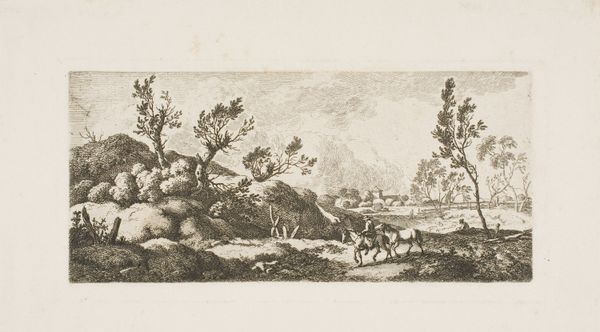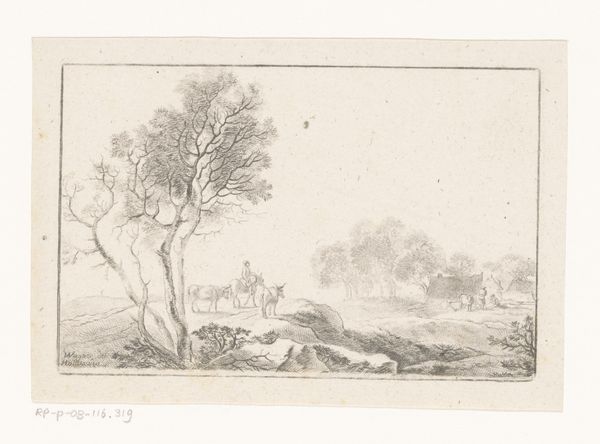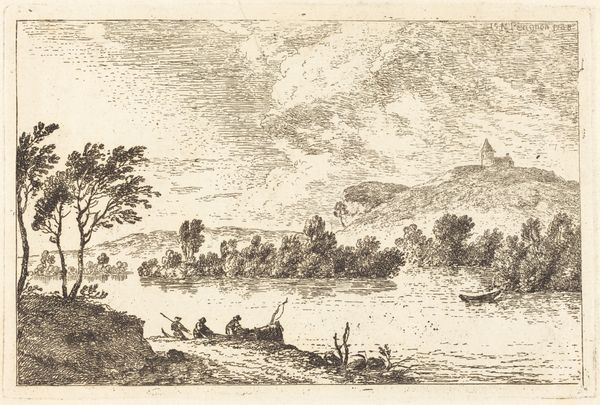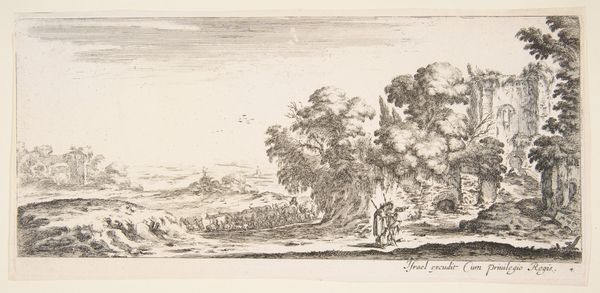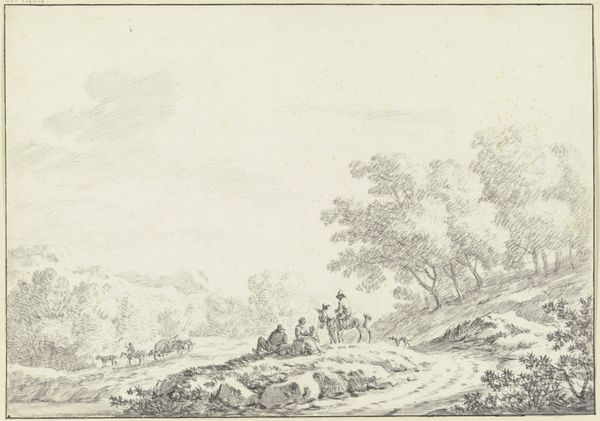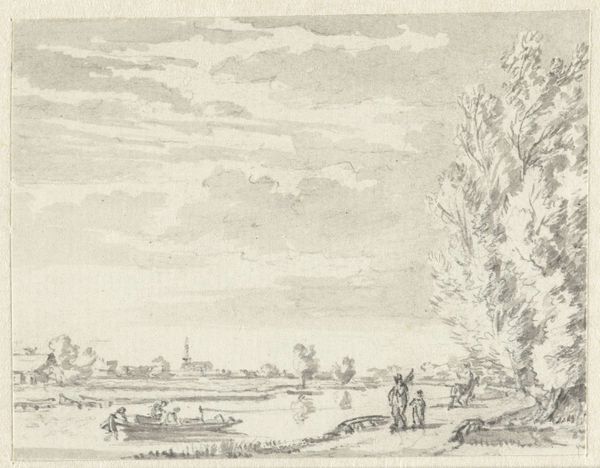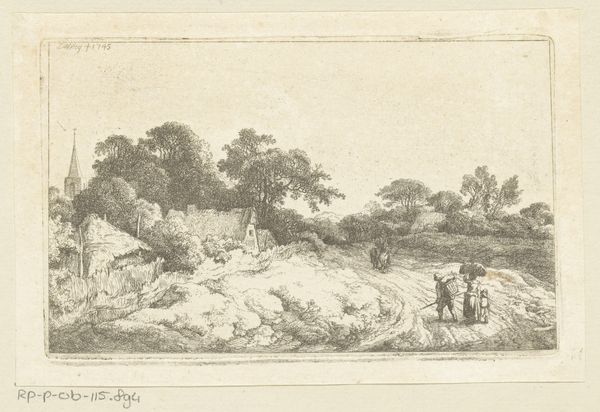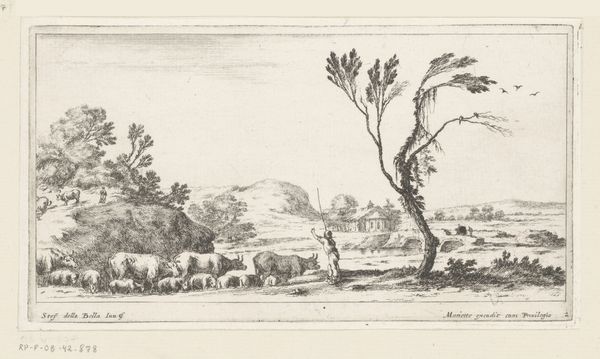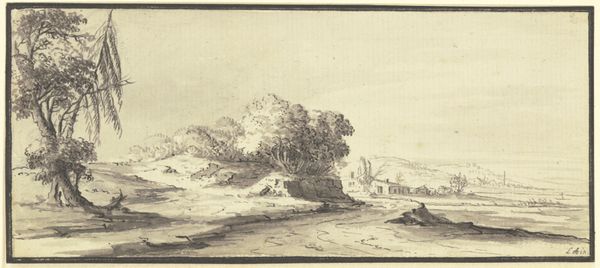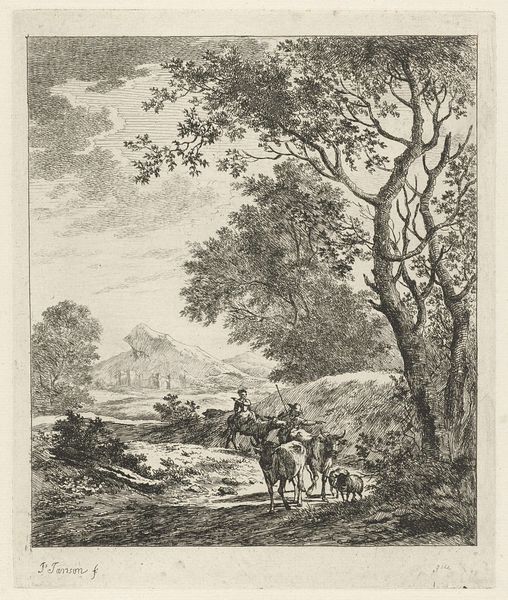
Plate 11: shepherdess seated to the right under a tree, watching her flock to the left, mountains to right in the background, from 'Various landscapes' (Divers paysages) 1636 - 1646
0:00
0:00
drawing, print, etching
#
drawing
#
baroque
#
animal
# print
#
etching
#
landscape
#
mountain
Dimensions: Sheet (trimmed): 5 1/16 × 10 1/16 in. (12.8 × 25.6 cm)
Copyright: Public Domain
Stefano della Bella etched this landscape scene around the mid-17th century, capturing a shepherdess amidst her flock. The pastoral motif, so simple at first glance, echoes through art history, embodying themes of serenity and a return to simpler times. Consider the shepherdess herself. Rooted in classical antiquity, the figure of the shepherdess appears in Virgil’s bucolic poetry, evoking Arcadia and idealised rural life. We see echoes of this figure in paintings throughout the Renaissance, a symbol of harmony between humanity and nature. But observe how the meaning shifts: no longer just a symbol of peace, the shepherdess, like the classical Venus, becomes an object of desire. This evolution reveals a complex psychological undercurrent; an yearning for a lost, harmonious past and perhaps a subtle anxiety about the complexities of modern life. Like a recurring dream, the shepherdess resurfaces across centuries, a testament to the enduring power of symbols deeply embedded in our collective memory.
Comments
No comments
Be the first to comment and join the conversation on the ultimate creative platform.

